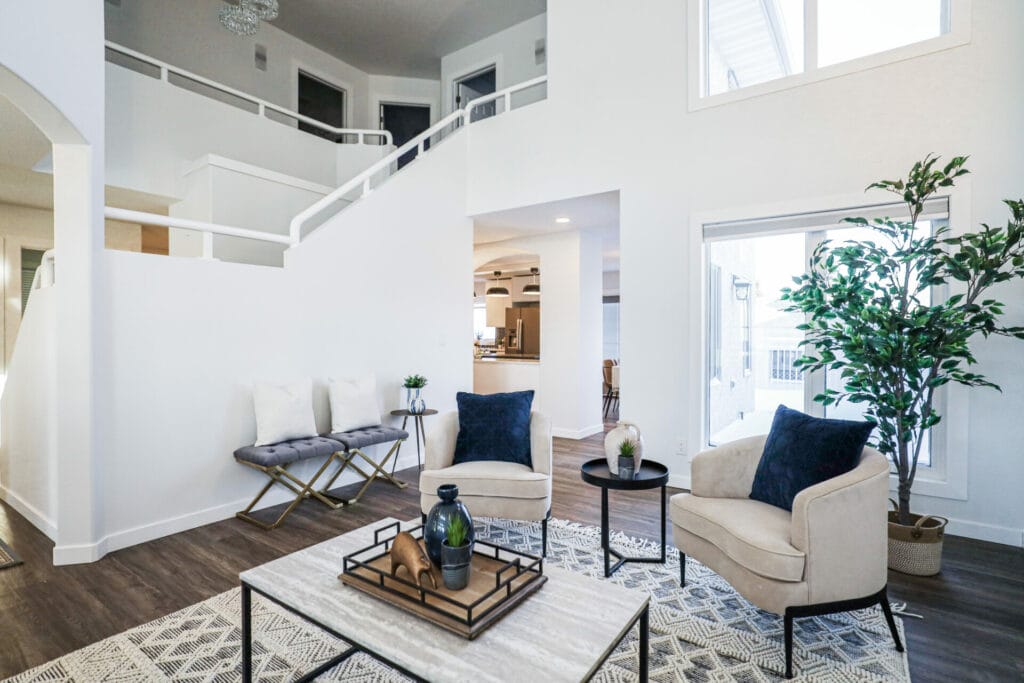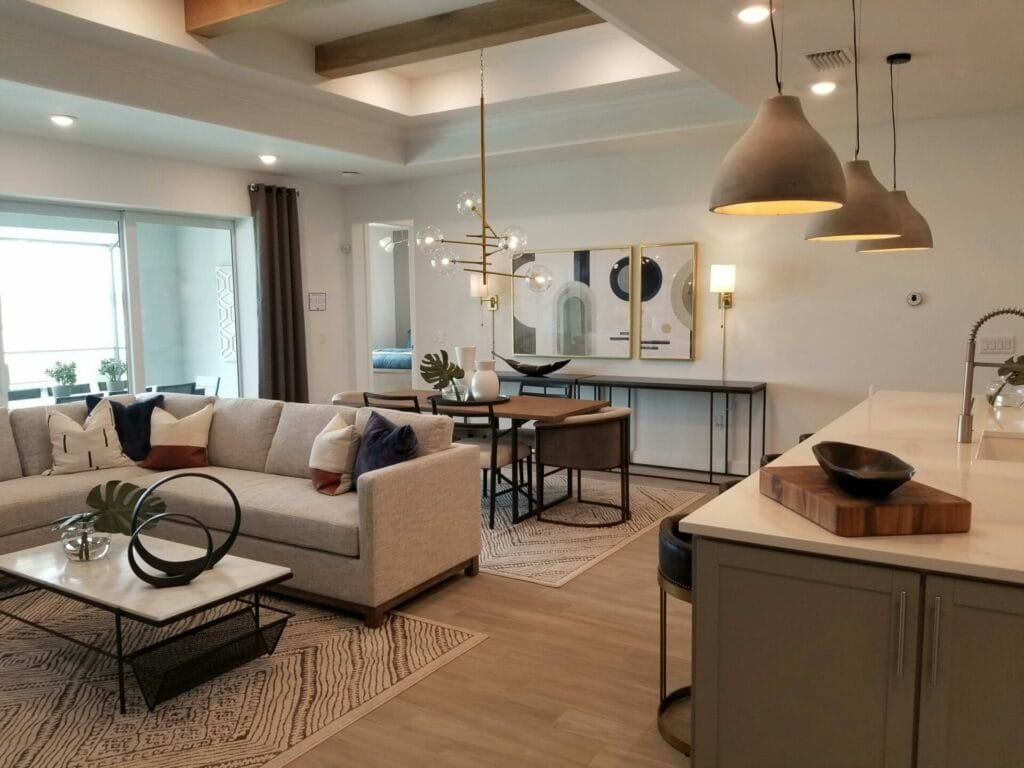In the world of real estate, the show ability of a home can make or break its success on the market. Whether you’re looking to sell your property quickly or simply want to create a more pleasant living space, understanding the nuances between Home Staging and home styling is crucial. Though these terms are often used interchangeably, they serve distinct purposes and offer unique benefits. Let’s explore what sets them apart and how each can be strategically used to meet your specific needs.
Defining Home Staging and Home Styling
What is Home Staging?
Home staging is the process of preparing a property for sale by making it appealing to the highest number of potential buyers. The goal is to help the property sell faster and at a higher price. Staging of an owner occupied home often involves decluttering, rearranging, and sometimes even renting furniture to create an inviting atmosphere that showcases the home’s best features.
Key Techniques and Usage
- Decluttering: Removing personal items and excess clutter to provide a clean, neutral space.
- Furniture Arrangement: Strategically placing furniture to highlight the room’s size and functionality.
- Lighting: Enhancing natural light and using artificial lighting to create a warm, inviting environment.
- Neutral Decor: Using neutral colors and minimalistic decor to appeal to a broad audience.
Home staging is a short-term approach typically used when a property is listed for sale. It’s a short-term investment aimed at making the home more marketable.

What is Home Styling?
Home styling, on the other hand, is all about making your living space more enjoyable and functional for you and your family. Unlike staging, which is designed to appeal to potential buyers, styling focuses on reflecting your personal taste and lifestyle.
Key Techniques and Usage
- Personal Touches: Incorporating items that reflect your personality and interests.
- Functional Design: Arranging furniture and decor to suit your daily activities and enhance comfort.
- Color Schemes: Choosing color schemes that you love and that make you feel at home.
- Seasonal Updates: Regularly updating decor and accessories to keep your home feeling fresh and current.
Home styling is a long-term approach, used to create a living environment that truly feels like home.
The Main Differences
Focus on Goal
- Home Staging: Aimed at selling the property as quickly and profitably as possible.
- Home Styling: Focused on creating a living space that you love and enjoy.
Target Audience
- Home Staging: Potential buyers.
- Home Styling: You and your family.
Cost
- Home Staging: Varies in cost depending on the depth of the transformation required to appeal to the target audience who would purchase the home. Rental furniture and professional fees; however, provides a return on investment by selling the property at a higher price.
- Home Styling: Costs are more spread out over time and focused on personal enjoyment and functionality.
When to Use Home Staging vs. Home Styling
- Home Staging: If you’re planning to put your home on the market, staging is the way to go. It helps potential buyers visualize themselves in the space and can lead to a quicker, more profitable sale.
- Home Styling: If you’re looking to improve or enhance your everyday living experience, styling is the better option. It allows you to create a space tailored to your tastes and needs.
Real-Life Examples
- Occupied Home Staging Example: Sarah listed her home for sale and decided to stage it. She removed personal items, rented modern art and decor and used the services of a professional home stager to set up the home. Within a week, she received multiple offers above the asking price.
- Home Styling Example: John wanted to refresh his living room, so he hired a Redesigner to help him choose a new color scheme, rearrange the furniture for better flow, and incorporate some of his favorite art pieces. Now, his space feels more comfortable and reflective of his style.
DIY Tips for Home Styling
Simple Changes That Make a Big Difference
- Declutter Regularly: A clutter-free space instantly feels more inviting.
- Use Mirrors: Mirrors can make a room feel larger and brighter.
- Update Soft Goods: New cushions, throws, and rugs can transform a space without breaking the bank.
- Add Plants: Indoor plants add life and color to any room.
- Personalize: Display items that make you happy, such as family photos or travel souvenirs.
Affordable Ways to Transform Your Home for Living
- Paint: A fresh coat of paint can completely change the look and feel of a room.
- DIY Decor: Get creative with DIY projects to add unique touches to your space.
- Shop Smart: Look for sales, clearance items, and second-hand finds to update your decor affordably.
- Rearrange: Sometimes, simply rearranging your existing furniture can make a big difference.
Hiring Professionals: What to Expect
When hiring professionals for either home staging or styling, you can expect a personalized approach tailored to your specific needs. Here’s what you can anticipate:
- Consultation: An initial meeting to discuss your goals, preferences, and budget.
- Plan Development: A detailed plan outlining the changes to be made.
- Implementation: Execution of the plan, which may include purchasing furniture and decor, rearranging existing items, and final touches.
- Follow-Up: Some professionals offer follow-up services to ensure you’re satisfied with the results.
Conclusion
Understanding the difference between home staging and home styling is key to deciding which approach is right for you. While staging is ideal for Selling Your Home, styling focuses on enhancing your living space for personal enjoyment. Whether you choose to stage or style, the goal is to create a space that meets your needs and reflects your personality.
Ready to transform your space? Book a call with one of our expert stylists at The Staging Place to help you refine your style and choose staple pieces that will make your home truly shine.
By considering the unique benefits and applications of both home staging and home styling, homeowners can make informed decisions that best suit their needs and goals. Whether you’re selling or simply looking to enjoy your space more, there’s a strategy that can help you achieve your vision.


